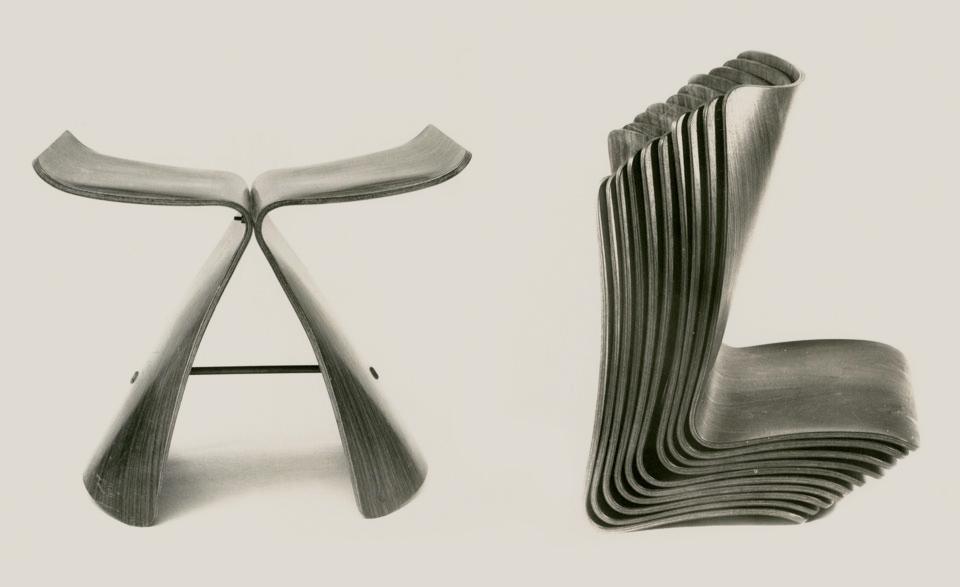Butterfly Stool
The designs of renowned Japanese industrial designer, Sōri Yanagi are characterised by timelessness and functionality. The Butterfly Stool elegantly combines Eastern and Western cultural influences – with traditional craftsmanship harmoniously embracing industrial technology.
Sōri Yanagi studied painting and architecture at the Tokyo University of the Arts, where he developed an interest in modern design and was influenced by the work of Le Corbusier and Charlotte Perriand. In the early 1940s, he went on to work as an assistant in Charlotte Perriand’s Tokyo design office, while she was an advisor to the Japanese Ministry of Commerce.
Sōri Yanagi was strongly influenced by his father, philosopher and aesthete, Yanagi Sōetsu, who established the concept of mingei, roughly translated as ‘folk craft’, in the mid-1920s. In some ways seen as a reaction to Japan’s rapid modernisation at the time, mingei seeks to celebrate the beauty of everyday objects and the crafts of ordinary people, appreciation for which he felt was being lost at the time. Yanagi Sōetsu went on to establish the Japan Folk Crafts Museum in 1936, dedicated to mingei. The influence his father’s work had on Sōri Yanagi can be seen in his inherent appreciation for practical crafts and arts. His extensive range of designs includes everyday objects like kitchen utensils and a kettle which are still hugely popular today. Functionality remained central to his design process, he noted, “the fundamental problem is that many products are created to be sold, not used.”
After founding the Yanagi Industrial Design Institute in 1952, Sōri Yanagi designed the iconic moulded plywood Butterfly stool in 1954. The stool is made of two identical pieces of gently curved plywood, when fastened back-to-back they’re reminiscent of a butterfly’s wings in flight. The shape also references traditional Japanese architecture such as the torii gate of a Shinto shrine. When first manufactured by Tendo Mokko, the stool was made of rosewood-faced five-layer plywood with a brass cross-bar.
Yanagi would make the first versions of a product repeatedly by hand, open to new forms taking shape through the process. His creations contain a quality that would be almost impossible to design in any other way.
Whilst embracing modern and industrial techniques such as the method for bending plywood used in the Butterfly Stool, originally developed by Charles and Ray Eames, Yanagi’s design process remained distinctly oriental. Once declaring, “basic concepts and beautiful forms do not come from the drawing board alone.”
Yanagi’s Butterfly Stool won the gold medal at the Milan Triennial in 1957 and is part of the permanent collection of the MOMA and Metropolitan Museum of Art in New York, and the Louvre in Paris. To commemorate the 60th anniversary of the piece, the Japan Design Committee organised an exhibition at the Matsuya Department Store, where Yanagi had first presented the stool in 1956. In 1977, Yanagi became director of the Japan Folk Crafts Museum in Tokyo, founded by his father 40 years before.








